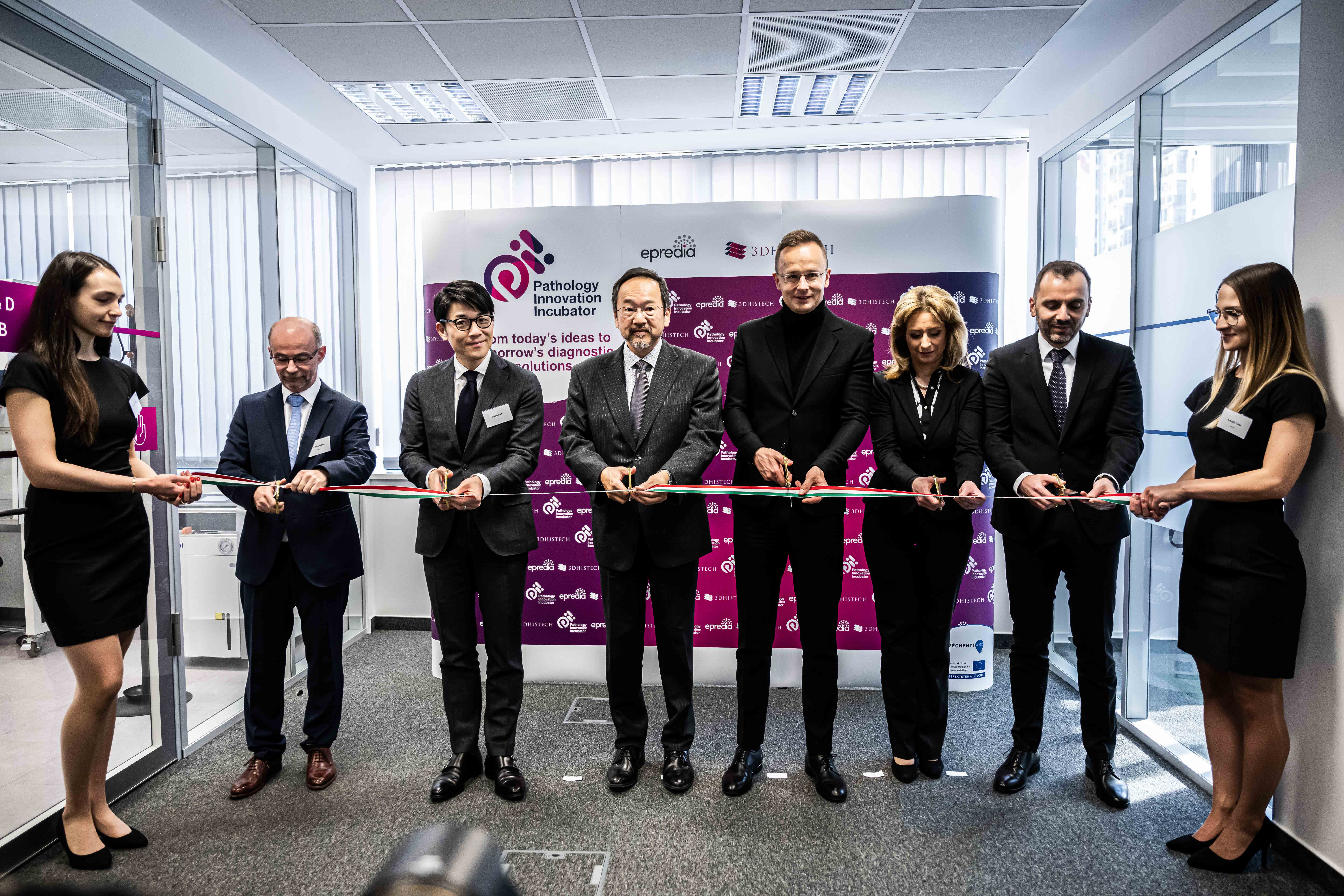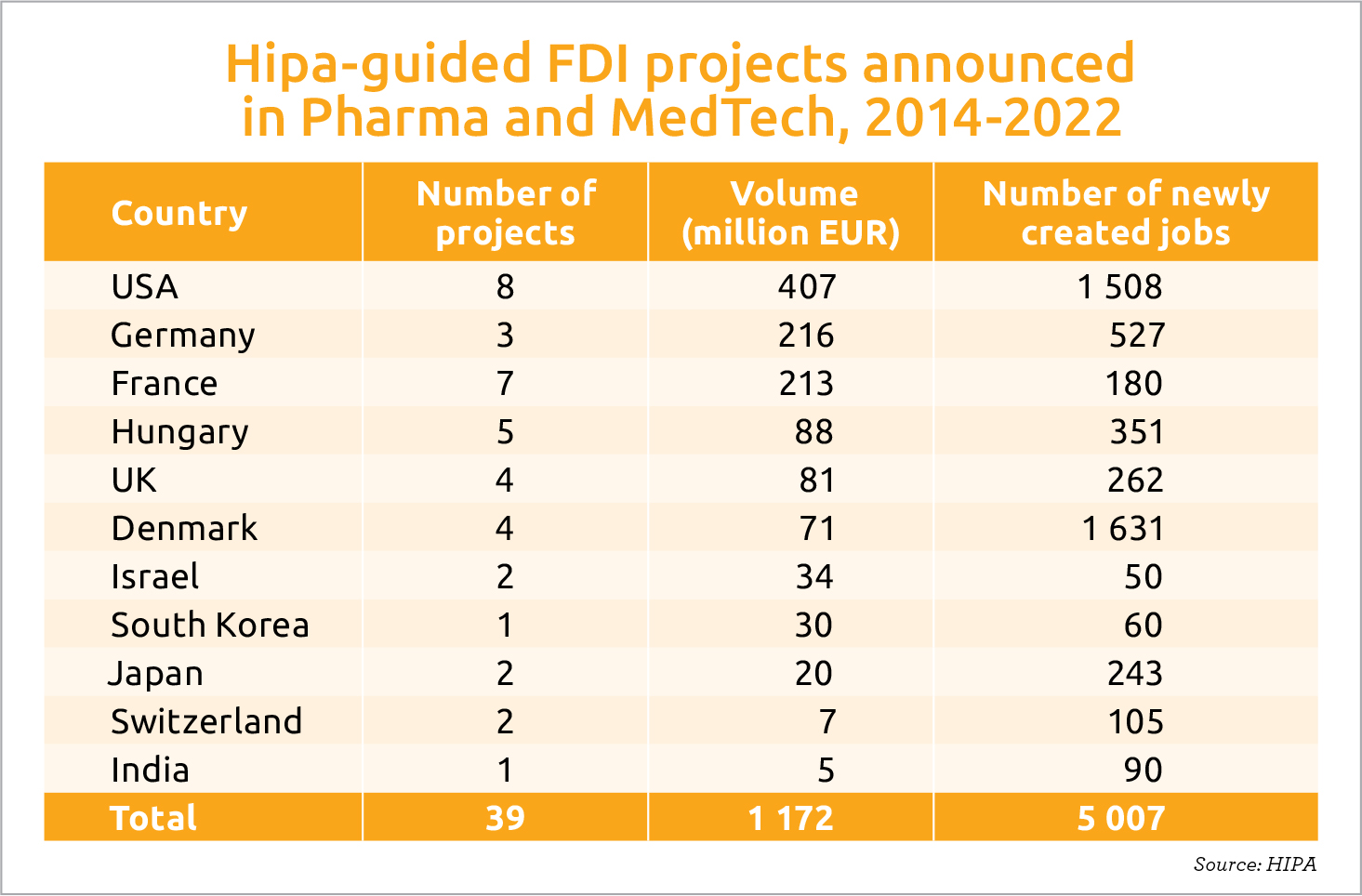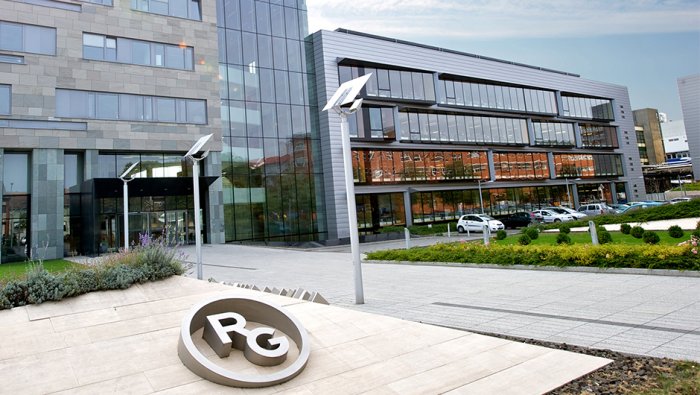Hungary’s Healthcare Industry Picking up Speed

The inauguration of the Pathology Innovation Incubator Center in Budapest on March 23. Photo by Hipa. From left: Dr. Béla Molnár (3DHistech Kft.), Koichiro Sato (PHC Group), Masato Otaka, Japan’s ambassador to Hungary, Hungary’s Minister of Foreign Affairs and Trade Péter Szijjártó, Orsolya Ferencz, ministerial commissioner for space research and István Joó, CEO of HIPA.
Investments in pharma and medtech are badly needed in Europe to keep pace with overseas competitors and prevent a large-scale brain drain. Against this backdrop, it is even more pleasing that Hungary’s healthcare industry is very much fired up, as evidenced by the data of the Hungarian Investment Promotion Agency. The latest success story features cutting-edge cancer research.
Pharmaceutical investments in the European Union are lagging compared to the United States. According to European Federation of Pharmaceutical Industries and Associations data, the investment gap grew from EUR 2 billion two decades ago to EUR 25 bln today.
The balance is shifting too when it comes to access to the latest treatments: while 25 years ago, half of new treatments came from Europe, that figure has now dropped to 20%. European lobby groups have valid concerns about employment and competitiveness, not least because companies are beginning to transfer their activities away from the continent.
No wonder there is pressure on the European Commission to respond to these threats in drafting its final proposal aimed at revising the EU’s 20-year-old general pharma legislation.
It remains to be seen to what extent the commission’s proposal, due to be finalized as this article was being prepared, can address these issues. However, what is certain is that the Hungarian pharma and medtech scene is on an upward spiral.
“Between 2014-2022, 39 Hipa-guided deals were closed worth nearly EUR 1.2 bln, with American and Danish companies leading the charge in the number of new jobs,” Hipa CEO István Joó says.
The latter two investor nations accounted for more than 40% of the total investment volume and more than 60% of the new jobs. Employing some 50,000 people, the healthcare industry’s contribution to the GDP is also growing. In 2022, 2,000-plus enterprises generated some 3% of Hungary’s GDP.
Recent flagship projects include the ramping-up of pre-fillable glass syringe production by Becton Dickinson (BD) and Schott for EUR 188 million and EUR 76 mln, respectively; Samyang Biopharm’s EUR 26.2 mln development to produce synthetic suture materials and Nolato’s EUR 21 mln investment to grow its hygienic and medical product manufacturing and storage area.

Long Tradition
Hungary can pride itself on having a long academic and scientific tradition. Semmelweis and Óbuda University are both vital knowledge hubs with international reputations. A new program for hospital and medtech engineers will start this September at Óbuda uni, unique in local higher education.
This enriches the portfolio of a university that conducts robotic surgery developments and tumor therapy research under the European Research Council and hosts Hungary’s first Faculty for the MedTech Industry.
Graduates and researchers from those prestigious higher education institutes support the background and competencies of R&D projects like the newly inaugurated Pathology Innovation Incubator that came into existence with the assistance of Hipa.
Behind the establishment are two highly successful companies, Hungary’s 3DHistech, a global pioneer in digital pathology manufacturing, and Epredia, a member of PHC Holdings Corporation (PHC Group).
As Dr. Béla Molnár, founder and CEO of 3DHistech Kft. notes, the two companies have partnered in digital slide scanning technology for pathology laboratories for several years. With the Pathology Innovation Incubator, they are seeking to build on that successful relationship and deepen their collaboration.
The mission of the Pathology Innovation Incubator is to turn scientific discoveries into innovative cancer diagnostic solutions.
“Long-term, we seek to develop methods and equipment suitable for faster and more precise diagnosis of cancer and tumor lesions,” Molnár says. “Our goal is for the Pathology Innovation Incubator to ultimately become a global scientific development center that will translate today’s scientific knowledge into clinical applications that contribute to the early and rapid cancer diagnosis.”
Cancer is the leading cause of death worldwide. According to the World Cancer Research Fund, 18.1 million cases per year are registered globally, and 10 million people die of the illness. Hungary is affected more heavily than the average: in 2021, over 30,000 deaths could be linked to cancer.
Significant Work
Epredia CEO Steven Lynum is aware of the significance of its work. The first project of Pathology Innovation Incubator, which has a budget of HUF 1.5 bln (approximately USD 4 mln), will push the boundaries of immunohistochemistry (IHC) to seek to find new solutions to complex diagnostics challenges.
That project aims to develop a highly complex combined medical technology solution for IHC tests, which are the basis of cancer diagnostics, to improve the effectiveness of personalized diagnostics and support patient treatment decisions.
“In addition to our IHC project, we are already seeing several R&D innovations in the Pathology Innovation Incubator that are bringing together cutting-edge Japanese, American and Hungarian technologies, as well as medical, biological and engineering solutions,” Lynum says.
As cancer diagnostics become increasingly complex, advancing innovative solutions can make a direct impact on society as a whole. According to Lynum, the fight against cancer must be made even more effective through better screening and early diagnosis.
“We want to develop effective and reliable diagnostic solutions to the current challenges in patient care, thereby increasing the range of options available,” he adds.
Both Epredia and 3DHistech will support the Pathology Innovation Incubator financially and through knowledge transfer and technology sharing. The investment should boost the output of sectors that are already very much export-driven. Over 86% of the total turnover of pharma and medtech derives from exports, making up 5.2% of total Hungarian exports, the highest among the V4 countries.
“From the researcher aspect, this is not only a financial investment but also the merging of our expertise and networks with Epredia’s resources as well as know-how sharing to create a unique and world-class innovation center. This volume naturally boosts the market potential of 3DHistech and Epredia, too,” Molnár concludes.
This article was first published in the Budapest Business Journal print issue of April 11, 2023.
SUPPORT THE BUDAPEST BUSINESS JOURNAL
Producing journalism that is worthy of the name is a costly business. For 27 years, the publishers, editors and reporters of the Budapest Business Journal have striven to bring you business news that works, information that you can trust, that is factual, accurate and presented without fear or favor.
Newspaper organizations across the globe have struggled to find a business model that allows them to continue to excel, without compromising their ability to perform. Most recently, some have experimented with the idea of involving their most important stakeholders, their readers.
We would like to offer that same opportunity to our readers. We would like to invite you to help us deliver the quality business journalism you require. Hit our Support the BBJ button and you can choose the how much and how often you send us your contributions.










